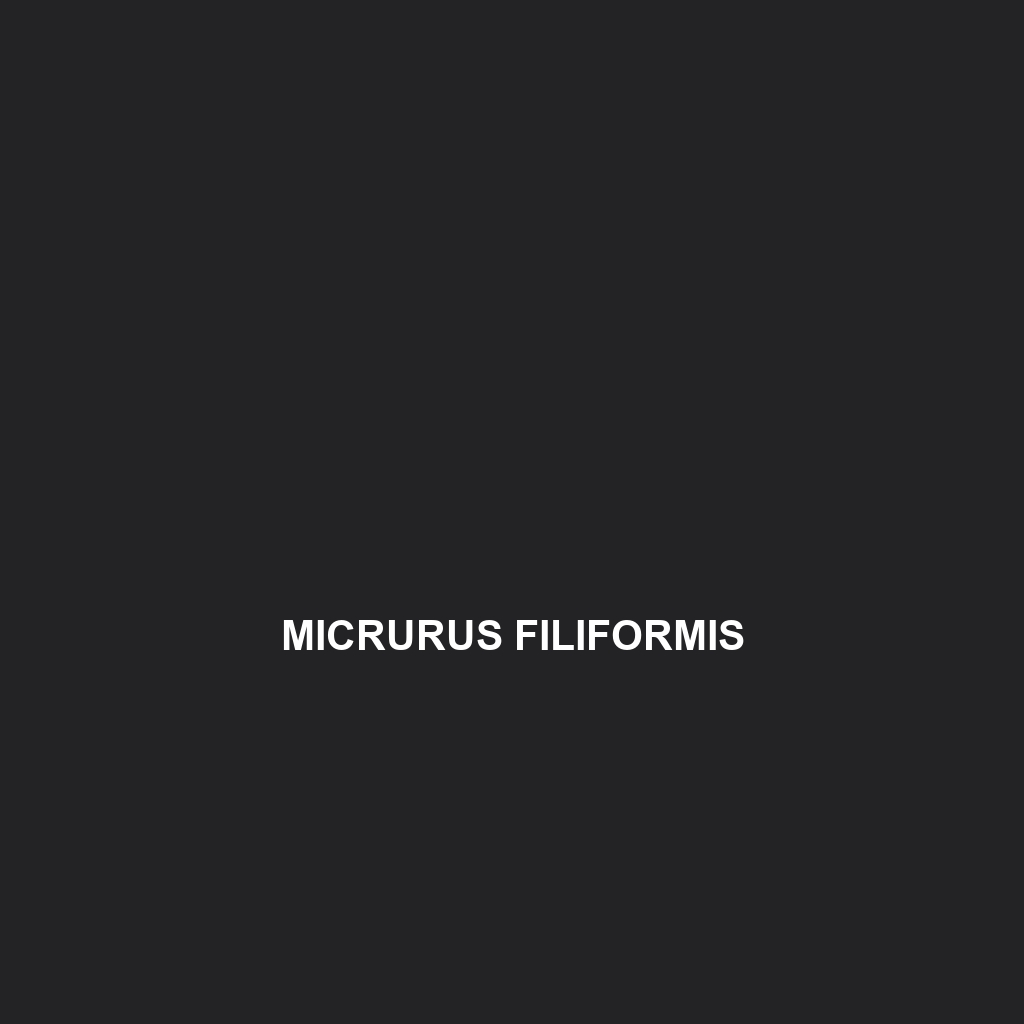Common Name
Micrurus filiformis
Scientific Name
Micrurus filiformis
Habitat
Micrurus filiformis, commonly known as the slender coral snake, primarily inhabits tropical and subtropical regions of Central and South America. This species is often found in humid rainforests, savannas, and along the edges of temperate forests. The typical climate for the slender coral snake includes warm temperatures and high humidity, essential for its survival and well-being. These snakes prefer leaf litter, undergrowth, and areas near water bodies, which provide adequate cover and facilitate their hunting strategies.
Physical Characteristics
Micrurus filiformis measures around 40 to 60 cm in length, with a slender, cylindrical body. Characteristically, it exhibits vivid coloration, often displaying alternating bands of red, black, and yellow/white. This bright coloration serves as a warning to potential predators about its venomous nature. The small head is barely distinct from the neck, a trait common to many elapid snakes, and the scales are smooth and shiny, reflecting light and enhancing its camouflage among the forest floor. Its distinctive patterning and length make it easily distinguishable from other non-venomous species.
Behavior
The slender coral snake is primarily nocturnal, engaging in most of its activities during the night when it hunts and forages for food. During the day, Micrurus filiformis is often found hidden under leaf litter or in crevices, effectively avoiding predators. This snake exhibits solitary behavior, and encounters with other snakes tend to occur primarily during the mating season. The species is known for its cautious movements and quick reflexes, attributes that assist in both hunting and evasion.
Diet
Micrurus filiformis is a strict carnivore, primarily feeding on small reptiles, amphibians, and invertebrates. It employs a fascinating tactic when hunting; utilizing its potent venom to subdue prey rapidly. The snake’s small size and slender build allow it to navigate through tight spaces to ambush unsuspecting prey. This snake’s diet is vital for maintaining the ecological balance in its habitat, controlling prey populations and contributing to its ecosystem’s health.
Reproduction
The reproductive cycle of Micrurus filiformis typically involves a mating season that occurs during the warmer months of the year. After a gestation period of approximately 3 to 4 months, the female lays a clutch of 3 to 14 eggs. These eggs are often hidden in moist environments, which offer protection and a conducive environment for hatching. Upon hatching, the juveniles are independent and possess the same coloration and venomous characteristics as adults from birth. Parental care is nonexistent in this species, and the young are left to fend for themselves shortly after emergence.
Conservation Status
Currently, Micrurus filiformis is listed as a species of least concern by the International Union for Conservation of Nature (IUCN). While it faces habitats loss due to deforestation and urban development, widespread threats have not yet resulted in significant population declines. Conservation efforts focus on habitat preservation to ensure that this species continues to thrive in its native environments. Education and awareness about the importance of preserving natural habitats are crucial for sustaining its population.
Interesting Facts
One intriguing fact about Micrurus filiformis is its ability to mimic the coloration of non-venomous snake species, which enhances its ability to avoid predators. Additionally, the slender coral snake is rarely seen in the wild, making encounters with humans uncommon, which adds an element of mystery to its behavioral patterns. This species is also known for its rapid strike when threatened, showcasing its defensive capabilities.
Role in Ecosystem
As a predator, Micrurus filiformis plays a critical role in controlling populations of small reptiles and amphibians. Its presence supports the food web, as it serves both as a predator and potential prey for larger animals. Moreover, the health of this snake can serve as an indicator of ecosystem vitality, as changes in its population may reflect broader environmental shifts. By contributing to the balance of species in its habitat, the slender coral snake helps maintain the overall ecological health of its environment.
This article provides a comprehensive overview of the slender coral snake, incorporating relevant keywords and structured HTML format that enhances search engine optimization (SEO).
